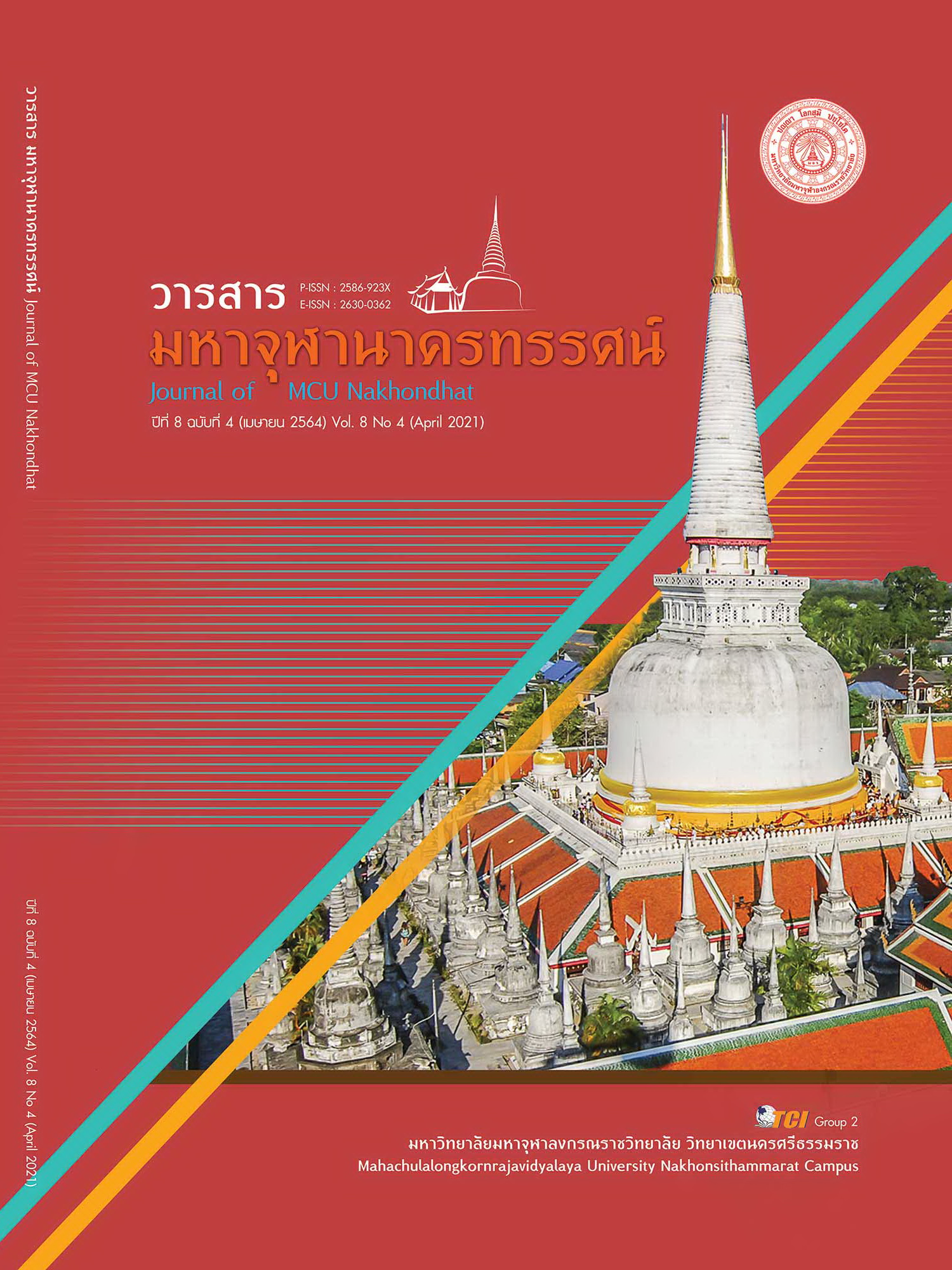PROBLEMS OF TILAPIA FISH CAGES IN LAM PA THAO DAM, CHAIYAPHUM PROVINCE
Main Article Content
Abstract
The objectives of this research article was to study the situation of tilapia farm management problems among farmers. The methodology was using participatory action research. The research was divided into 2 phases of 10 steps, consisting of 12 research Participants, 5 speakers or key informants, and the target group of this research was cay tilapia farmers. In Lam Pa Thao Dam Chaiyaphum Province of 22 households. The research instruments were questionnaires, interviews and group discussion. Collect data and write a research report according to the research objectives. The findings of the study revealed that: Situation of problems in managing tilapia farms among farmers were 1) The reason why farmers prefer to raise fish cages Is able to be the main occupation of the household because the income from tilapia fish cages was greater than income from farming or other agriculture. 2) The main problems in tilapia fish cages was the cost of food that so expensive. The farmers had to buy from the start until catches up for sale, which was found that food costs accounted for 60% of the income. The suggestion for fish food that promote farmers made self - produced for cheaper. For example, using Napier grass or natural plants as an ingredient in fish food 3) The next problem was the dead fish problem. The main causes was water knocking , lack oxygen and die a lot In addition, there were fish death problems caused by unclean environments or cages. The above causes of death resulted in the loss of tilapia farmers. Some suggestions for solving this problem were checking water conditions and taking care of cleaning and finally using automatic control of oxygen in the water via mobile phone.
Article Details
References
กรรณิการ์ นิ่มทรงประเสริฐ. (2558). รูปแบบและกลยุทธ์ในการดำเนินธุรกิจเลี้ยงปลานิลของผู้ประกอบการในพื้นที่ตำบลบางแขม. ใน วิทยานิพนธ์บริหารธุรกิจมหาบัณฑิต สาขาการบริหารธุรกิจ. มหาวิทยาลัยศิลปากร.
ชนกันต์ จิตมนัส และคณะ. (2549). การใช้กระเจี๊ยบแดงผสมอาหารเพื่อกระตุ้นภูมิคุ้มกันในปลานิล. เชียงใหม่: มหาวิทยาลัยแม่โจ้.
ประคุณ ศาลิกร และโสมสกาว เพชรานนท์. (2559). การลงทุนเลี้ยงปลานิลเพื่อการพาณิชย์ในจังหวัดนครปฐม. วารสารเศรษฐศาสตร์และกลยุทธ์การจัดการ, 3(1), 40-54.
มณฑกาญจน์ ตันนานนท์. (2554). ความสัมพันธ์ระหว่างส่วนประสมการตลาดและกระบวนการตัดสินใจซื้อลูกพันธ์ปลานิลแปลงเพศของผู้ซื้อ จากมานิตย์ฟาร์ม ในจังหวัดเพชรบุรี. ใน ภาคนิพนธ์บริหารธุรกิจมหาบัณฑิต สาขาวิชาการจัดการทั่วไป. มหาวิทยาลัยราชภัฎเพชรบุรี.
เยาวภา ไหวพริบ และคณะ. (2556). การวิจัยเชิงสังเคราะห์เกี่ยวกับมาตรฐานการผลิตสินค้าปลานิลตลอดห่วงโซ่เพื่อสนับสนุนการขับเคลื่อนยุทธศาสตร์ความปลอดภัยอาหาร. ใน รายงานวิจัย. สำนักงานกองทุนสนับสนุนการวิจัย.
เริงชัย ตันสุชาติ และคณะ. (2556). ห่วงโซ่คุณค่าของปลานิลในจังหวัดเชียงใหม่และจังหวัดเชียงราย. ใน รายงานการวิจัย. มหาวิทยาลัยแม่โจ้.
ศูนย์วิจัยและพัฒนาประมงน้ำจืดชัยภูมิ. (2559). รายงานประจำปี 2558 - 2559. ชัยภูมิ: กองวิจัยและพัฒนาประมงน้ำจืด.
สำนักงานประมงจังหวัดชัยภูมิ. (2562). ผลผลิตชนิดสัตว์น้ำที่สำคัญจากการเลี้ยงปี 2562. เรียกใช้เมื่อ 18 พฤษภาคม 2563 จาก https://www.fisheries.go.th/fpo-chaiyaphum/web2/images/samart/17.1s.pdf
. (2563). ผลผลิตชนิดสัตว์น้ำที่สำคัญการจับสัตว์น้ำจากแหล่งน้ำธรรมชาติ. เรียกใช้เมื่อ 18 พฤษภาคม 2563 จาก https://www.fisheries.go.th/fpo-chaiyaphum/web2/images/samart/17.2p.pdf
สำนักงานประมงจังหวัดนครปฐม กรมประมง. (2555). ระบบฐานข้อมูลเกษตรประมง/พื้นที่. เรียกใช้เมื่อ 18 พฤษภาคม 2563 จาก http://www.fisheries.go.th/fpo-nakhonpatom/
สำนักงานเศรษฐกิจการเกษตรจังหวัดชัยภูมิ. (2553). ผลผลิตปลานิลประจำปี 2553. เรียกใช้เมื่อ 18 พฤษภาคม 2563 จาก http://www.oae.go.th/view/1/TH-TH


